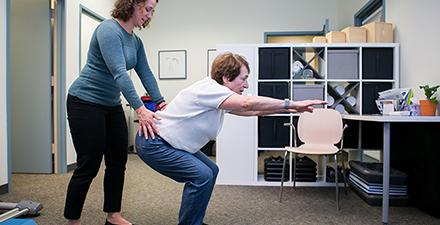
Opioids shouldn't be the first or only approach to treating most chronic pain.
That's the bottom line message the Centers for Disease Control and Prevention. In March 2016, the CDC released new guidelines supporting this message for prescribing opioids for chronic pain. Now a study published in JAMA supports those recommendations.
The study found that doctors were less likely to prescribe opioids for people who received treatment by a physical therapist soon after a diagnosis. Researchers looked at opioid use for four common conditions:
When patients had physical therapy early, later opioid use reduced by about 10% for the following year (results varied by condition).
A 'Viable Option' for Preventing Long-Term Opioid Use
"This study provides early evidence that the CDC guidelines may help decrease long-term opioid use," said Steven George, PT, PhD, one of the study's contributing researchers. "The biggest takeaway is that early physical therapy may be a viable option for several musculoskeletal conditions, especially if preventing long-term opioid use is a treatment goal."
George cautioned that the study doesn't suggest that early treatment by a physical therapist was related to better clinical outcomes. Rather that people who were treated by a physical therapist first were less likely to be prescribed opioids later.
"This isn't a world where there are magic bullets," said Eric Sun, MD, PhD, , an author of the study. "But many guidelines suggest that physical therapy is an important component of pain management, and there is little downside to trying it."
What the CDC Guidelines Say
The CDC guidelines encourage conservative approaches such as physical therapy when:
The risks of opioid use outweigh the rewards when:
- Patients want to do more than mask the sensation of pain.
- When needed, combining opioid treatment with nonopioid approaches can help keep dosage and usage as low as possible.
- Pain lasts 90 days and becomes a chronic condition.
- The guidelines make clear that properly-dosed prescription opioids are still appropriate in some cases. These include cancer treatment, palliative care, and end-of-life care.
How Physical Therapists Can Help
Physical therapists are movement experts. They improve quality of life through hands-on care, patient education, and prescribed movement.
After making a diagnosis, physical therapists create treatment plans to help people:
- Improve mobility.
- Manage pain and other chronic conditions.
- Recover from injury.
- Prevent future injury and chronic disease.
Physical therapists empower people to be active participants in their own treatment. They team with other health providers to ensure that patients receive the care they need.
What You Should Do
If you're experiencing chronic pain, talk to your health care provider about your goals and the options for your care.
Download this pain profile self-assessment and use it to talk with your doctor or physical therapist. They can help you determine the best treatment plan for you.
Learn more about how physical therapists can help you manage your pain safely.


